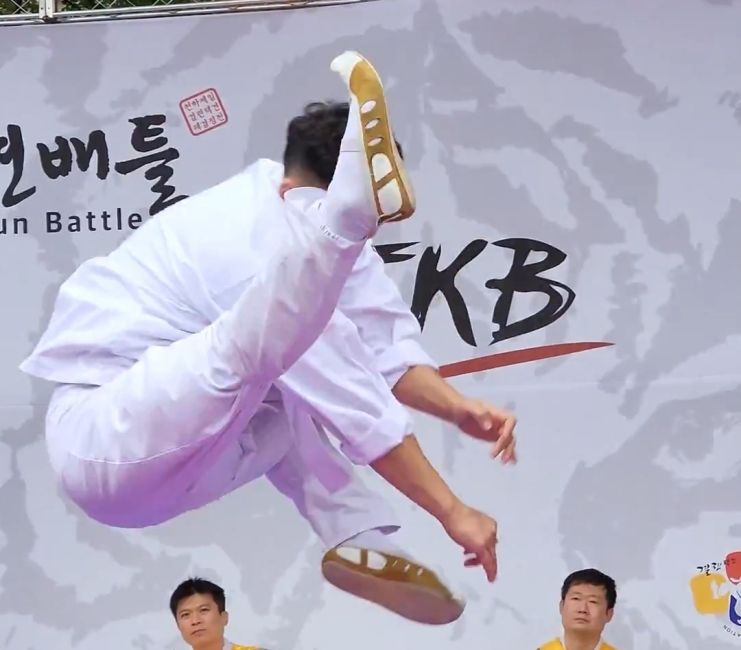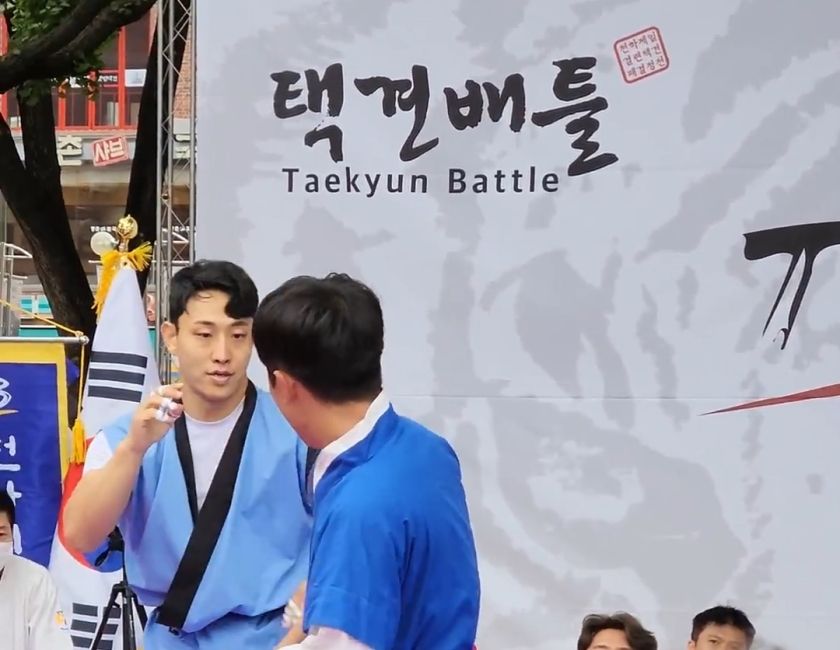A Fun Midterm at a Takkyeon Tournament in South Korea
I spent a day at a Taekkyeon event to learn more about its tradition. I attend a Taekkyeon class in Yonsei for 1 unit credit. The two hour class is held once per week and taught by a Taekkyeon master under the Korean Taekkyeon Association. The master assigned a short midterm paper which required myself to attend a Taekkyeon event that he directed. I found the assignment would be fun and interesting. The Taekkyeon Battle was not related any CIEE programming.
My takeaway from the Taekkyeon Battle (The midterm writing portion)
From watching the Taekkyeon event, I understood the martial art primarily preserves Korea’s artistic roots. As I approached the site, a band of musicians greeted and drew in people who happened to walk by. The sound from the percussionists, Pungmul, filled the surrounding environment with dance music. After the ceremonial introduction, a demonstration of Taekkyeon was performed. A melody played in the background that complements Taekkyeon’s slow, flowing motions. Thus, the entire performance was well put on. Also, the percussionists continued to play in small intervals throughout the competition. The added music acted like a way to cheer the competitors. From my thoughts, they felt encouraged and gained confidence. Moreover, the music was a psychological tool that supported all competitors to try their best.
Personally, I too felt the resonance coming from the event, bringing people together. I thought that was the intention. The musicians and the fighters produced nostalgia of Korea’s traditions. This cause the audience to be heartly touched by witnessing an artform that their ancestors once participated in. In other words, those people felt belonging with their culture. Now, Taekkyeon is not about defeating one’s opponent; it is to preserve tradition.
Other societies may not agree and claim it is an unpopular combative sport. To change this perception, Taekkyeon should be taught more into its connection with culture. For instance, Pumbalki is a common technique in Taekkyeon to attack and dodge opponents; furthermore, it is a rhythmic, smooth dancing movement. Fighters and performers step back and forth in place along with the 3-beat rhythm like Arirang. Their movements are fluid rather than fast and striking. These actions resemble the Taegeuk, the peace between two different energies like two fighters in combat. This approach is a better method to understand Taekyeon; however, it requires people to be willing to learn. From witnessing the event, my appreciation in Taekkyeon grew.
About Taekkyeon
Taekkyeon is a traditional Korean martial art with fluid and rhythmic movements. It is currently preserved in the UNESCO Intangible Cultural Heritage. Taekkyeon is an effective martial art with a goal of making fighting opponents to withdraw without physical damage. Seasonally, Taekkyeon is used in community events and occasions. About 50 Taekkeyeon practicioners are notable in the community. The Korean Taekkyeon Association continues to promote the traditional martial art.
Related Posts
Eating Away Homesickness
Even though it’s my second time living abroad—specifically in South Korea—that doesn’t make me immune to homesickness. Honestly, it sneaks up on you in the most unexpected ways. Sometimes, it’s... keep reading
K-Pop Stan’s Guide to South Korea: 5 Must-Do Activities While Studying Abroad
By: Jacqueline Lee South Korea is the place to be as a kpop stan, so here are 5 activity ideas that you must do during your time abroad! 1. Collect... keep reading





